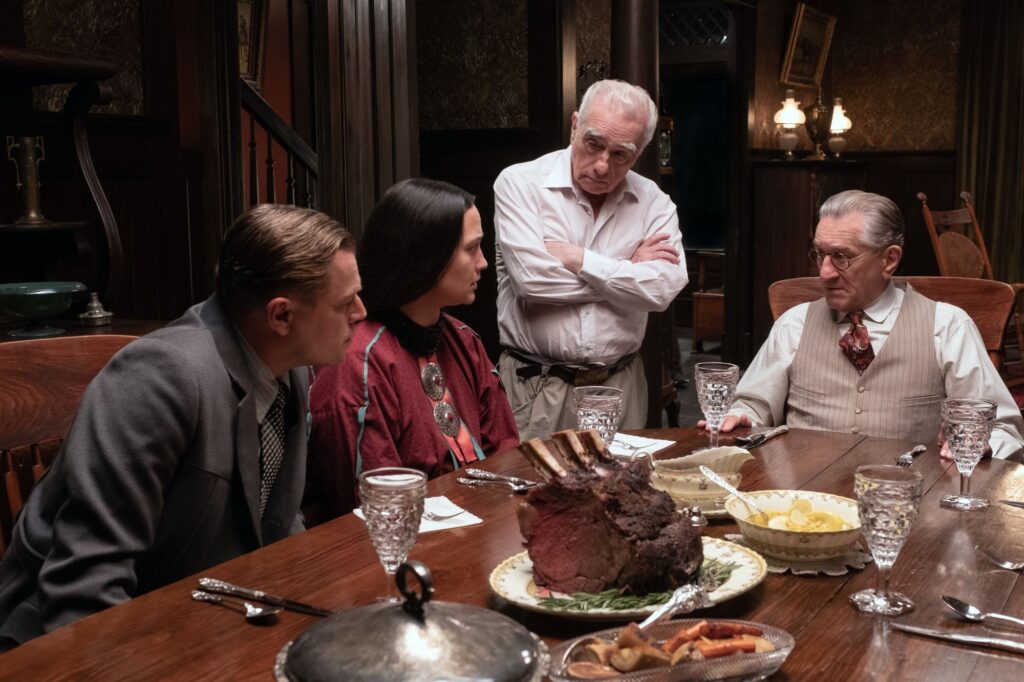
Martin Scorsese’s western true-crime thriller is about the US’s Osage murders of the early 1920s … Scorsese crafts an epic of creeping, existential horror about the birth of the American century, a macabre tale of quasi-genocidal serial killings which mimic the larger erasure of Native Americans from the US. It places in the drama’s foreground a gaslit marriage of lies and poisoned love. It echoes Scorsese’s earlier work about mob violence, mob loyalty and the final, inevitable sellout to the federal authorities, whose own bad faith gradually emerges. But in the end, this film is about what all westerns are about, and perhaps all history: the brutal grab for land, resources and power (The Guardian)
Killers of The Flower Moon is for sure the best of Scorsese’s recent movies. Differently from The Irishman, which is a pale follow-up to the classic Scorsese’s early gangster movies, this film is dramatically fresh and new. Western, gangster, historical or thriller, whatever badge you want to pin to it, it is about the bloody birth of America and consequently it is linked to Gangs of New York, another Scorsese’s must about the violent and corrupt roots of American society. The director tells us the Indian Wars were not only the dark side of the XIX century epic conquest of the West, he also tells us ‘How The West Was – really – Won’, i.e. that the Indian Wars continued well into the next century, and implicitly now.
White supremacy, greed, colonial spirit, racism are the Osage’s serial murders motives, in order to steal the Oklahoma territory where they were confined after they were expelled by their own land, sacred to the Native Americans, in the name of the white man’s holy right to take hold of all the territories in their West expansion. The Osage’s reservation was inhospitable and dry, but when black gold was discovered there, the violent fight to take them back inevitably begins.
A superb De Niro plays the father/master villain, the lord of the land whose greed uses multiple murder plots against whites and palefaces alike as a means to achieve his goals. A terrific Di Caprio is the prodigal nephew, partly victim and partly villain, subdued to his cheating uncle by his mediocrity. The positive character here is his Indian wife, the ‘damsel in distress’ of old, who successfully fight for survival and social justice. The inter race marriage is a taboo that ran through all American society since its birth, but it is easily overpassed when it comes to marry “headrights” – the right to possess the land and its riches.
As in classic westerns, in the end ‘arrivano i nostri’ – the good guys come. Not the US cavalry of Stagecoach but the newly established FBI. Justice is partly done in the end, but to call it a happy ending is a bit too much. The FBI in the movie is as ambiguous as it has always been in reality. Nonetheless, it is the only white man’s redemptive element in the story.
In the beginning, the film takes its time in the setting of the scene but it takes a certain rhythm in the second part, when the federals arrive and the detection starts. So the 206 minutes run smoothly and the film is never boring. Never you take a look at your watch, your eyes remain glued to the bloody birth of America on screen.